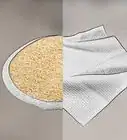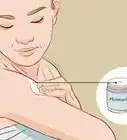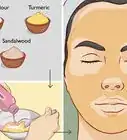This article was co-authored by Laura Martin. Laura Martin is a Licensed Cosmetologist in Georgia. She has been a hair stylist since 2007 and a cosmetology teacher since 2013.
wikiHow marks an article as reader-approved once it receives enough positive feedback. This article received 11 testimonials and 85% of readers who voted found it helpful, earning it our reader-approved status.
This article has been viewed 627,391 times.
Loofahs are made from fibrous material found in gourd-like tropical fruits. The spongy texture is perfect for exfoliating skin to keep it smooth and sleek. To properly use a loofah, you’ll need to get one, put soap and water on it, and scrub your body. Make sure to also rinse, dry, and sanitize your loofah in order to keep it clean.
Steps
Using a Loofah
-
1Obtain a loofah. Loofahs are usually the color of pale straw, with a slightly herbaceous scent. They come in many shapes and sizes, and are often sold as either cylinders or sliced discs. The texture of a loofah is rough when dry, but once you add hot water it becomes soft and supple.
- Loofahs are available at most stores that sell body care accessories, including drugstores.
- Loofahs are different from plastic bath poufs; the two items are used for the same purpose, but loofahs are made from a plant-based material and are said to be better for the skin.
-
2Wet the loofah in the shower or bath. Warmer water will cause the loofah to get softer more quickly. If you want the loofah to retain some texture and scrubbing ability, just wet it slightly before proceeding.Advertisement
-
3Apply soap to the loofah. Many people use body wash, which easily seeps into the surface of the loofah, but rubbing bar soap over its surface works as well. A little soap goes a long way; you only need a dime-sized amount or so.
-
4Scrub your body with the loofah. Starting at your decolletage (the expanse of skin between your neck and chest), gently but firmly rub the loofah against your skin in circular motions. Work your way down to your ankles and then repeat along the back of the body. Don't forget to scrub your arms and hands as well.
- Care should be used around delicate areas such as underarms.
- If your skin is dry, rinse the soap out of the loofah before using it on your arms and legs.
- Additionally, you can use the loofah on the heels and soles of your feet. Be careful if standing in a slippery shower.
- The circular motion will help remove dead skin cells and is gentler on your skin than scrubbing up and down.
-
5Rinse your body with cool water. This will close your pores and make you feel awake and refreshed. If trying to lull yourself to sleep with a shower or bath, use warm water instead.
Caring for a Loofah
-
1Rinse your loofah after each use. Use hot, clean water, making sure all the soap is gone. Soap left in the loofah could begin to smell.
-
2Dry the loofah completely between uses. Put it in a place with good circulation so it can dry completely. Drying it out will prevent bacteria from forming inside the loofah.[1] Store your loofah on a hook outside of the shower.
- Placing it near a vent or fan can also help it dry out quickly.
- Since many bathrooms stay humid, you might want to dry the loofah in a different room.
-
3Sanitize the loofah once a week. You can run it through a hot wash cycle with your towels, run it through the dishwasher, microwave it for 30 seconds, or boil it in hot water for several minutes to kill any bacteria that might be growing. No matter what method you use, do it at least once a week to make sure the loofah stays healthy for use.
- Dermatologists have recently found that loofahs tend to harbor more bacteria than previously thought. That's why it's important to sanitize your loofah often.[2]
- The same holds true for plastic bath poufs. Even though they aren't made from natural materials, they can still harbor bacteria.
-
4Replace your loofah every three weeks. After this much time the loofah will be starting to fall apart from use and runs through the washer or boiling water. If you haven't been sanitizing your loofah, it's no longer safe for use after three weeks. Either way, time to get a new loofah.[3]
- Many people have recently switched to using washcloths, since they're easier to run through the washer and they last much longer than loofahs.
- If you decide to stick with loofahs, make sure you dry them properly after each use and replace them frequently to keep your body healthy.
Expert Q&A
Did you know you can get expert answers for this article?
Unlock expert answers by supporting wikiHow
-
QuestionCan you eat a loofah?
 Laura MartinLaura Martin is a Licensed Cosmetologist in Georgia. She has been a hair stylist since 2007 and a cosmetology teacher since 2013.
Laura MartinLaura Martin is a Licensed Cosmetologist in Georgia. She has been a hair stylist since 2007 and a cosmetology teacher since 2013.
Licensed Cosmetologist
-
QuestionWhy should I use a loofah?
 Laura MartinLaura Martin is a Licensed Cosmetologist in Georgia. She has been a hair stylist since 2007 and a cosmetology teacher since 2013.
Laura MartinLaura Martin is a Licensed Cosmetologist in Georgia. She has been a hair stylist since 2007 and a cosmetology teacher since 2013.
Licensed Cosmetologist
-
QuestionIs using a loofah unsanitary?
 Laura MartinLaura Martin is a Licensed Cosmetologist in Georgia. She has been a hair stylist since 2007 and a cosmetology teacher since 2013.
Laura MartinLaura Martin is a Licensed Cosmetologist in Georgia. She has been a hair stylist since 2007 and a cosmetology teacher since 2013.
Licensed Cosmetologist
Warnings
- Be gentle, but firm while using a loofah to exfoliate. Too gentle and you won't be removing any dead skin; too rough and you'll give yourself a rash or cause flakes.⧼thumbs_response⧽
References
About This Article
To use a loofah, wet the loofah with warm water to soften it, then apply a small amount of soap or body wash to the sponge. Use gentle but firm circular motions to scrub your body, starting right below your neck and working your way down to your ankles. Repeat this along the back side of your body, and don't forget to scrub your arms and hands! Then, rinse off with cool water and pat your skin dry. For tips on keeping your loofah bacteria-free, read on!
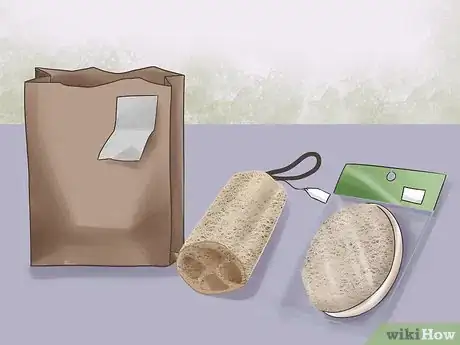
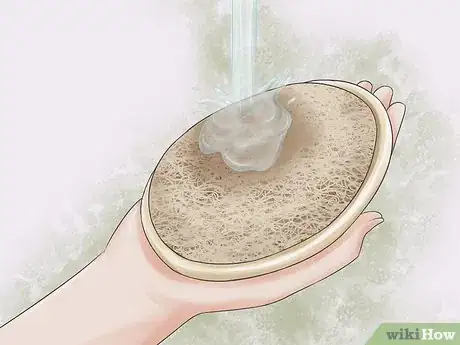
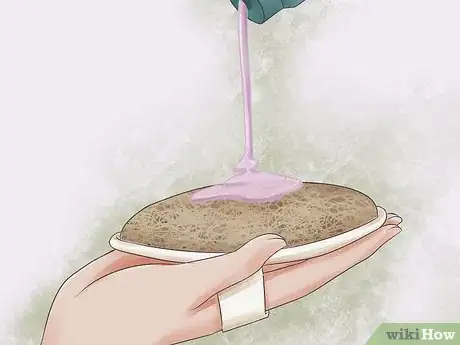
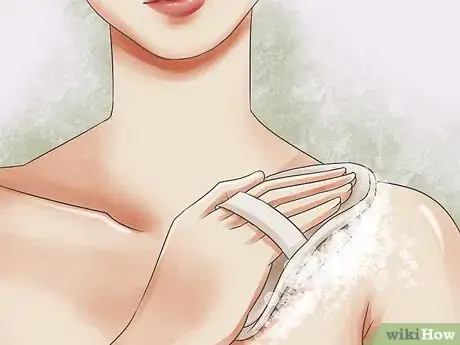
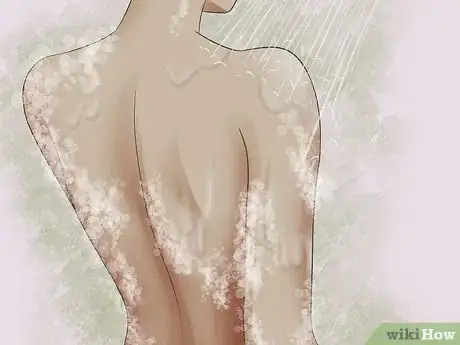
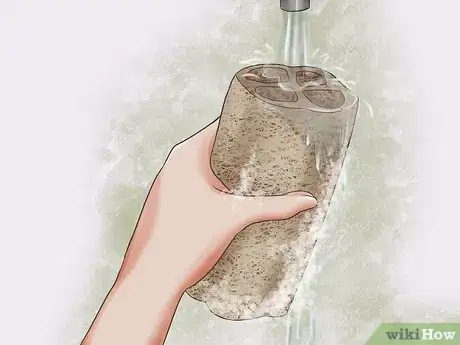
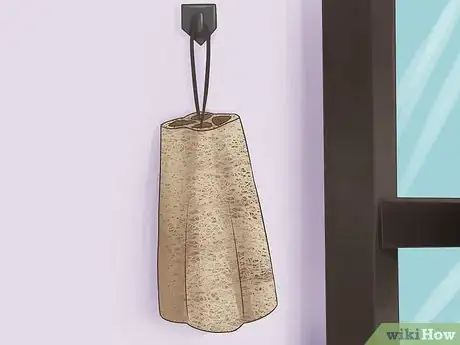
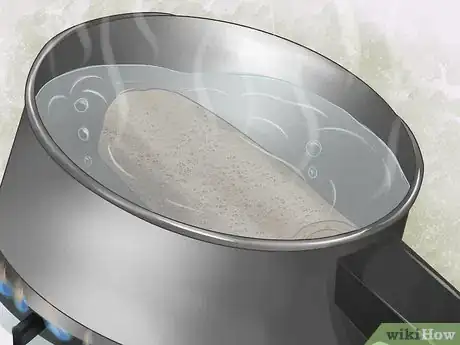
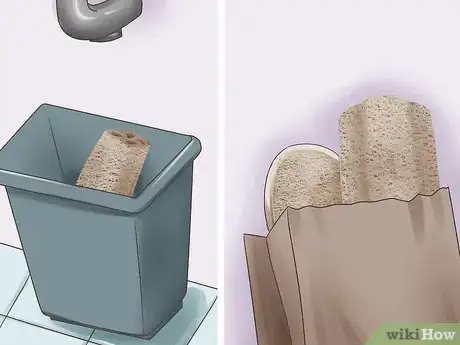


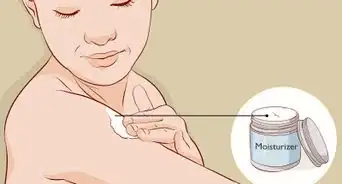
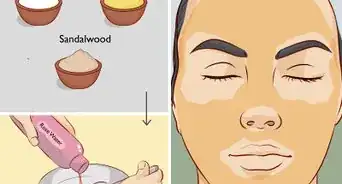
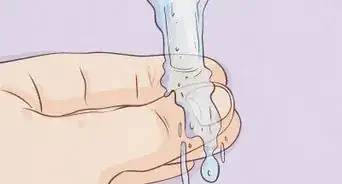
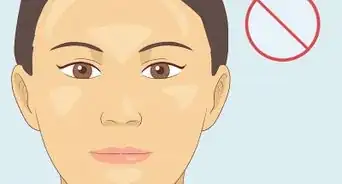

-Step-12-Version-3.webp)















